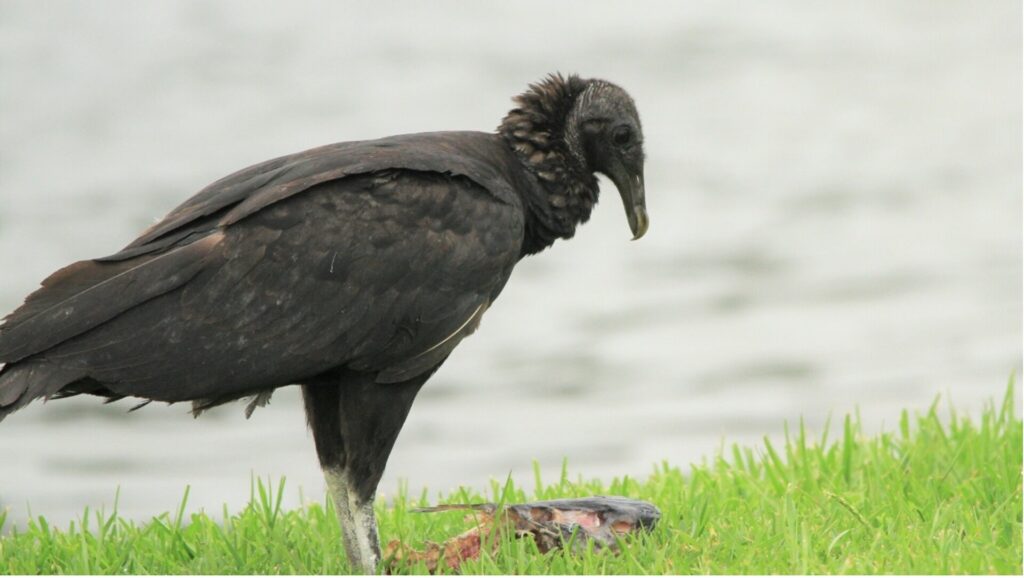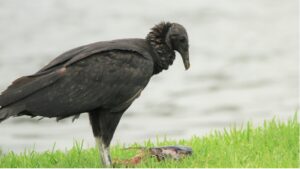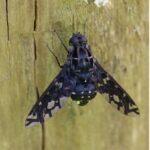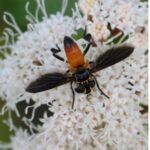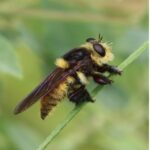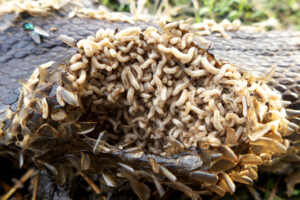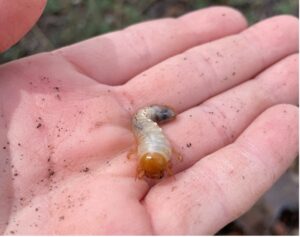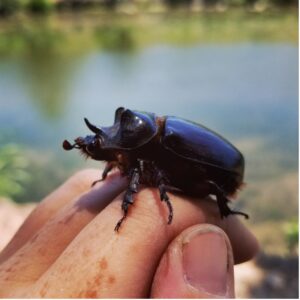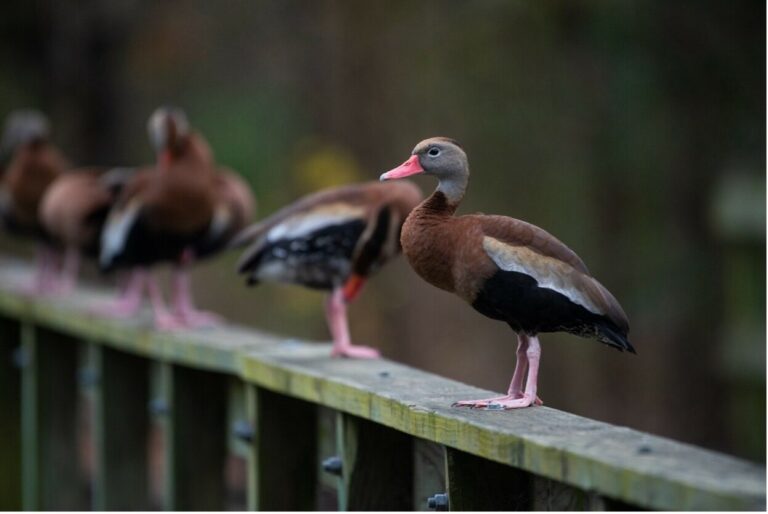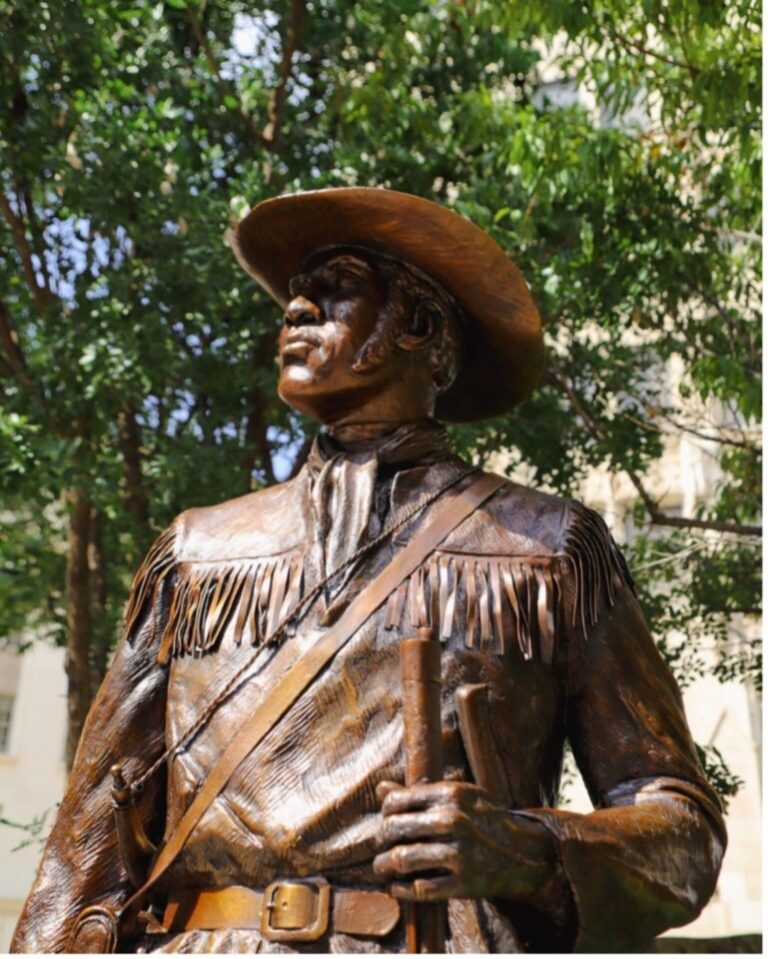Last Updated on February 13, 2024
Let’s face it: there are just some creatures that give people the creeps! Whether they look “gross” or live in sketchy, damp places – you’re not alone in wanting to avoid them, but these are often the types of creatures that we’d certainly miss if we didn’t have them because of the essential ecosystem services they provide for in the watershed. Let’s take a look at a few misunderstood organisms that might be scary enough for some this Halloween.
VENERABLE VULTURES
Starting with an easy one: vultures in the San Antonio River Basin are most likely Black Vultures (Coragyps atratus) or Turkey Vultures (Cathartes aura). Vultures are often regarded as pests, harbingers of death, or even thought of as diseased or unclean. However, vultures have a crucial role in recycling nutrients from animal carcasses. The fact that these large birds can consume a considerable amount of carrion, decaying flesh of dead animals, means that without them, it’s possible that an animal carcass smell might linger a bit longer than we’d like – that’s the real yuck! But in nature, nothing goes to waste. Instead, it’s an endless cycle of opportunity for life to go on.
Vultures are sometimes mistakenly referred to as “buzzards,” which are actually a cousin that reside in Eurasia. (Photo Credit: Peter Joseph, CC-BY-NC-ND)
In fact, while some may have negative feelings about vultures, they actually help keep us and other animals safe! People should definitely avoid dead animals because they can harbor diseases, like harmful (though often natural) toxins. Vultures are incredibly well-adapted to their cleaning job because they have a potent digestive system that can kill many of those dangerous microorganisms!
Vultures aren’t the only members of nature’s clean-up crews. Whether it be an animal carcass, a fallen tree, or scat – who else do we have to thank for dealing with the dirty work?
MARVELOUS MAGGOTS
Maggots! Making most people feel queasy, these are actually larvae – usually fly larvae – the same stage that a caterpillar is to a butterfly (and honestly, not super different looking either!). As it turns out, flies are incredibly diverse and not just limited to those really annoying ones that somehow can’t find their way out of your house. Some are stunning, with beautiful colors and intricate patterns, and all of them play a role in our ecosystems for watershed health.
From Left to Right: Tiger Bee Fly (Xenox tigrinus), Robber Fly (Mallophora fautrix), Swift Feather-legged Fly (Trichopoda pennipes) (Photo Credit: Lee Marlowe CC-BY-NC)
Without flies, we’d be nearly overrun with dead, stinky animals and an overflow of wildlife waste! Maggots offer a natural and almost undercover way of dealing with these things – they consume and help to break down these smelly, gross products. If you’ve ever heard of manure being a good fertilizer, you have flies to thank for that! Manure doesn’t break down on its own; flies (maggots) and other organisms consume and digest it, leaving behind a protein- and nutrient-rich “compost.” This compost becomes integrated into the soil, returning the availability of those nutrients to plants – what a way to recycle!
While maggots and other organisms help to break down and recycle waste, it’s essential to distinguish whose waste that means. Native wildlife like coyotes, raccoons, and opossums have a natural diet and are part of the ecosystem; pets like dogs, cats, and other non-native animals consume a less natural and often processed diet and, therefore, introduce less ecosystem-friendly waste into the environment. Although flies can help us decompose animal waste, pet waste is not a natural part of the landscape. Please help keep an excess of bacteria and pathogens out of the river and scoop the poop!
Did you also know that maggots were used for centuries to clean wounds of rotting flesh? This has been especially helpful even in more recent years as more and more antibiotic-resistant strains of bacteria can become a problem – maggots to the rescue!
GLORIOUS GRUBS
If you’ve made it this far, we’re past the grossest stuff, and now we can look at grubs! (Grubs are definitely not as gross as maggots, right?) Like “maggot,” the term “grub” also refers to a larva, but these look like an obese version of a weird-looking caterpillar. Grubs are the larvae of certain kinds of beetles, which are one of the most species-rich groups of animals on earth!
Photo Credit: Alicia Ramsey
Grubs usually live underground, feeding on roots, aerating, adding, and mixing nutrients in the soil until they emerge as beautiful, durable adults, but they can also help break down decaying vegetation like fallen tree limbs. Grubs may be a bit slower, but they are also a part of nature’s clean-up crew to help return nutrients, like nitrogen, from dead trees and plants back into the soil for further use! By leaving deadwood, mainly hardwood, where it is, we can foster habitat for native ox beetles, longhorn beetles, scarab beetles, and more! And if that’s not enough, grubs are also a nutritious food source for many animals, like birds and your friendly neighborhood squirrels, skunks, and raccoons! Win-win!
Local-area beetle species that need hardwood or other detritus for development include the beetle pictured here: the Aloeus Ox beetle (Strategus aloeus). (Photo Credit: Alicia Ramsey, CC-BY-NC)
Maybe some of these animals look a bit unseemly to you, but hopefully, now you understand that, despite their appearance or reputation, they are beneficial and deserving of a lot more credit than they get! Next time you’re pestered by a buzzing fly, see a soaring vulture, or find a squishy grub, consider all the messes, smells, and dangers they’ve cleaned up for you and how they improve the health of our local creeks and rivers! Check back next Spooky Season for more misunderstood critters of the necrobiome!
GUIDE TO DECOMPOSER TERMINOLOGY
grub: larva of beetles
maggot: larva of flies
metamorphosis: the cycle of life stages for the development of insects; metamorphosis can be either “complete” or “incomplete.”
larva (plural: larvae): the second stage of complete metamorphosis, what emerges from an egg. For butterflies and moths, these are specified as caterpillars
adult: the fourth and final stage of complete metamorphosis, or the third and final stage of incomplete metamorphosis
necrobiome: a community composed of many different types of organisms that utilize decaying organic matter; “nature’s clean-up crew.”
nutrients: natural substances essential for the growth and development of organisms, available in soil, air, and water; key nutrients in nature are nitrogen, phosphorous, and potassium, which make up many store-bought fertilizers

